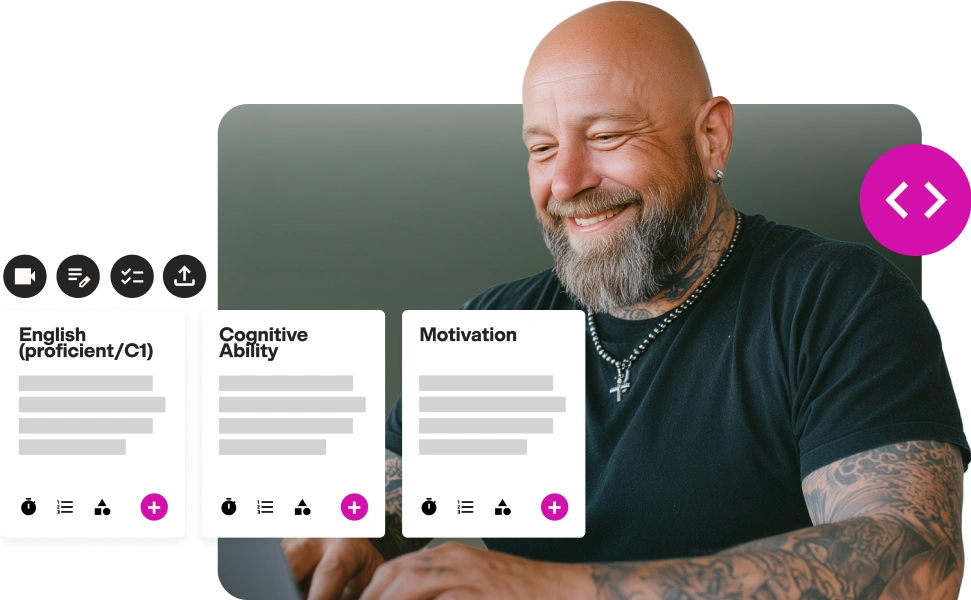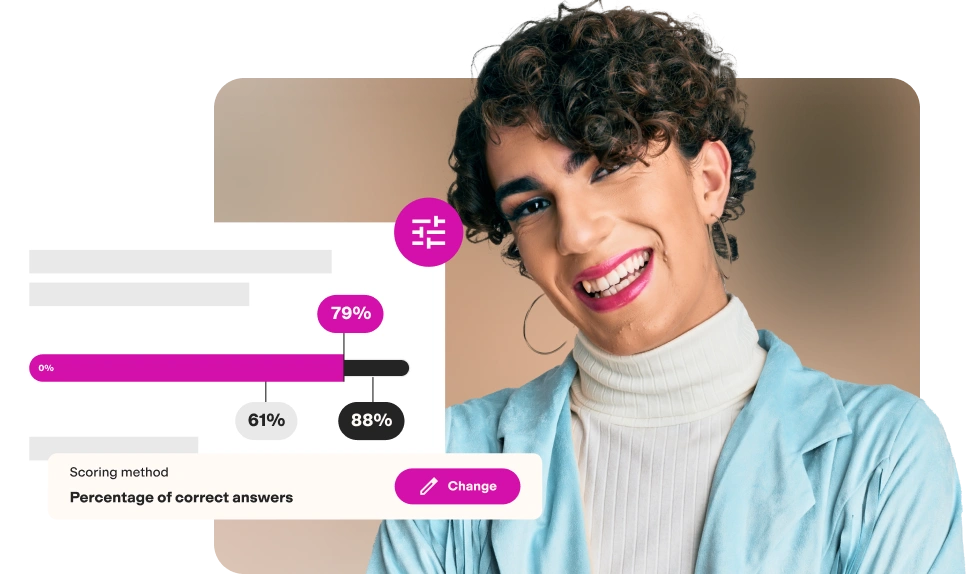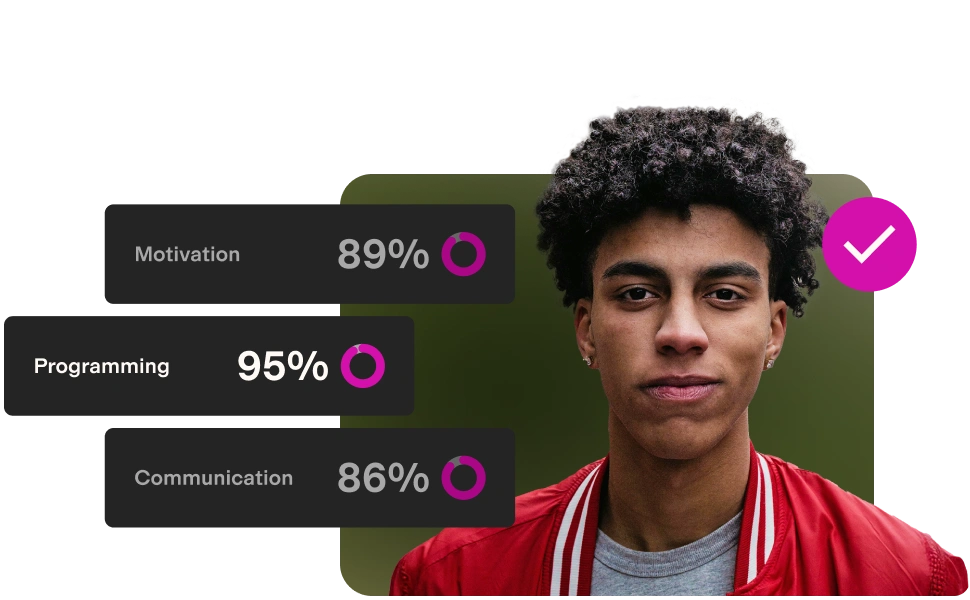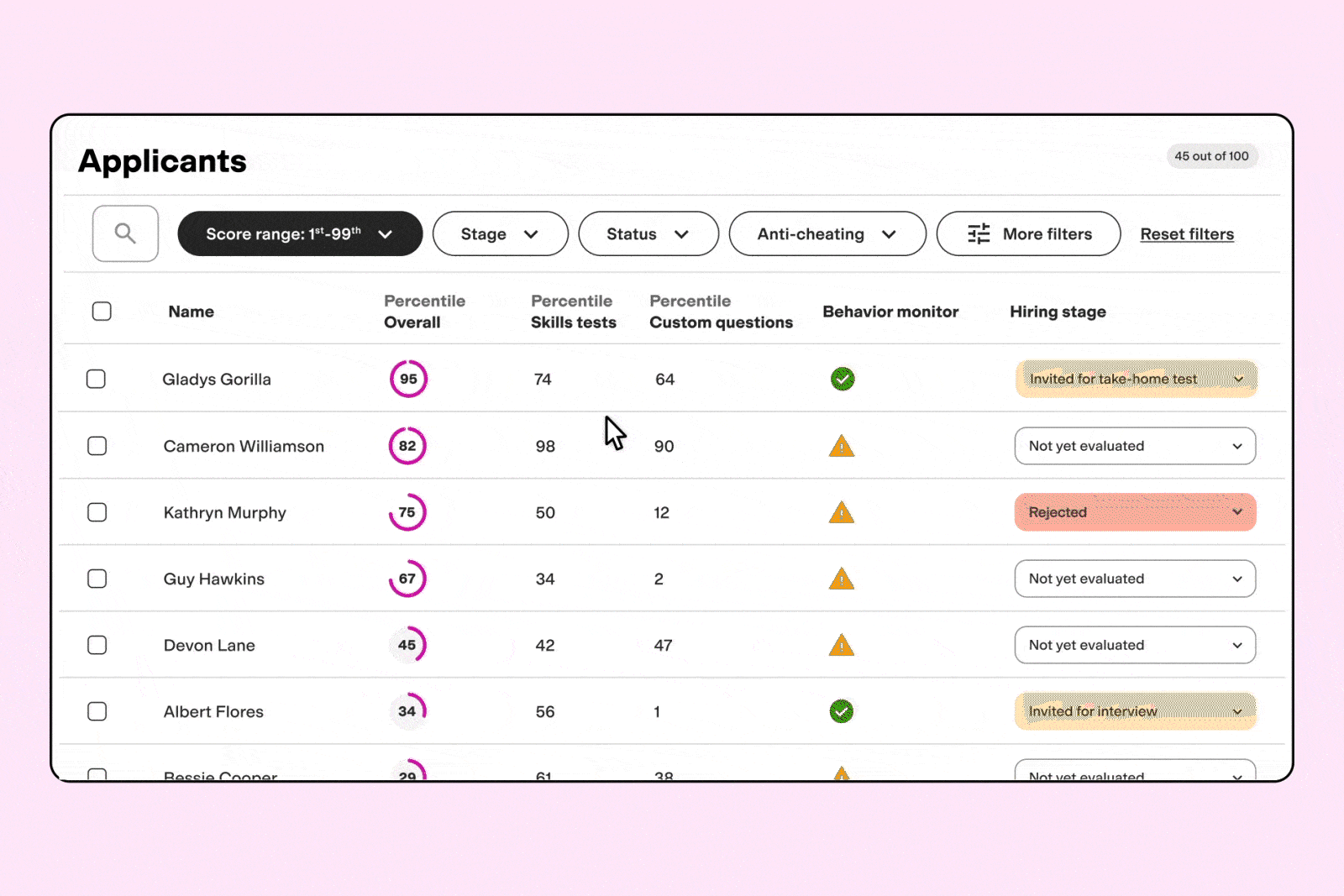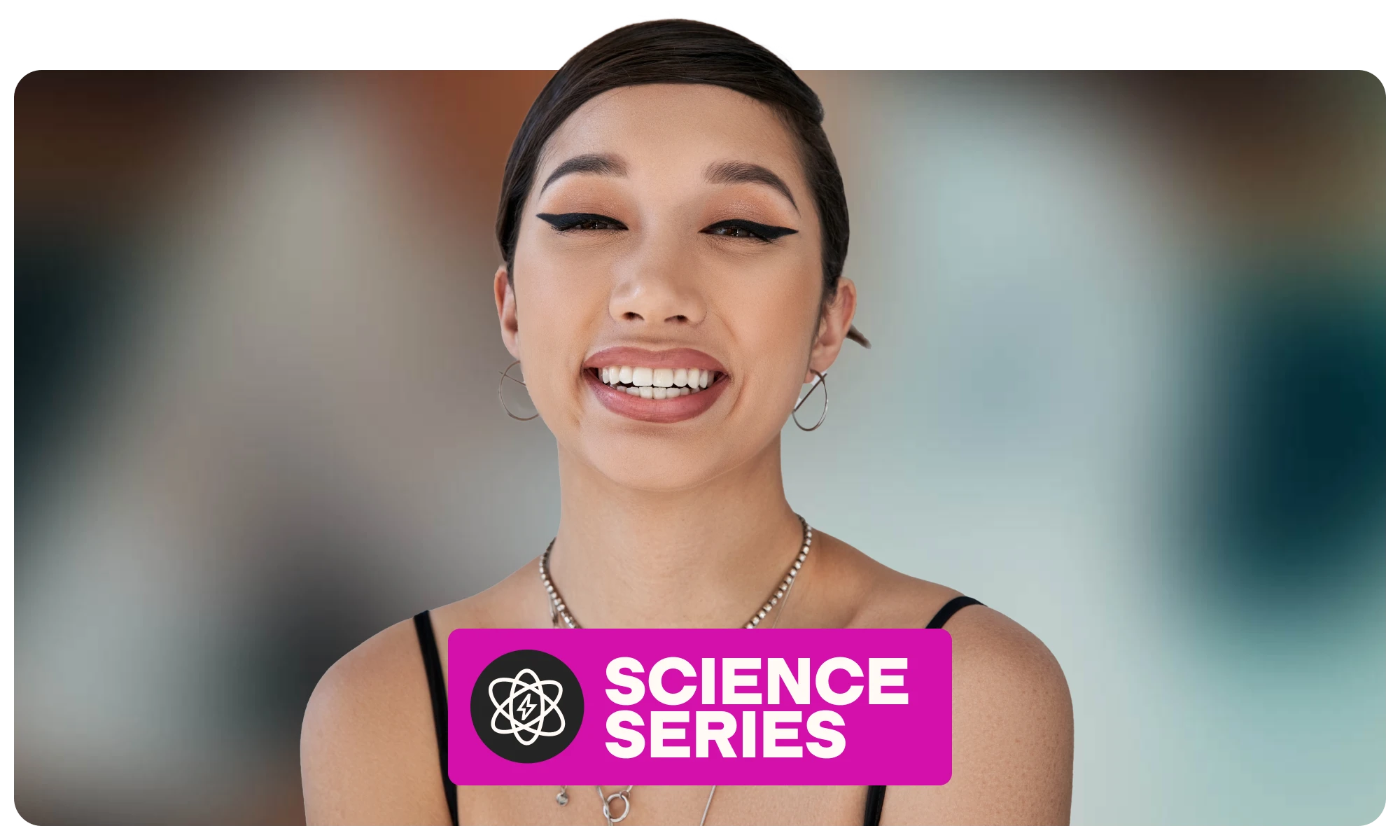A science-backed hiring solution
We are committed to providing you and your candidates with an enjoyable, accurate, and science-backed talent assessment experience – so that you can confidently and accurately validate and rank your candidates’ skills. We achieve this by taking a deeply scientific, multi-layered approach to test development and validation.
Created and validated by experts
TestGorilla's IP (Intellectual Property) development specialists work with subject matter experts to design our tests and write valid questions. We employ rigorous selection processes to find the right experts. Working closely with our IP development specialists, subject matter experts are trained in the science and art of test development, and our team provides developmental edits and guidance to ensure our tests are valid, reliable, fair, and inclusive. Everything is reviewed by a professional copy-editor and an additional, independent subject matter expert for accuracy and technical correctness.
“The breadth, depth, and diversity of the talented people in our IP Development and Science and Assessment Innovation teams ensure we have the capacity and expertise to deliver leading edge, science-based measurement, assessment content, insights, and innovation.”
Continuous improvement for reliable, science-backed tests
Our work doesn’t stop there. TestGorilla's Science and Assessment Innovation Center of Expertise collects and analyzes data for all tests to examine their quality and impact. We continually conduct a variety of psychometric analyses to maintain and improve the reliability, validity, and relevance of our tests. This includes looking at internal consistency, content validity, construct validity, face validity, and criterion-related validity.
Predicting job success with data
Our test and skill libraries draw on the US Department of Labor’s skills database (O*NET OnLine) as well as the European Commission’s European Skills, Competences, Qualifications and Occupations (ESCO). In addition to working with multiple subject matter experts to develop our tests, we draw on these well-established frameworks to ensure the content validity (what a test evaluates) of each of our tests.
We also conduct independent validation studies and collect data and feedback from our customers about the performance of candidates they hire. This helps us evaluate the predictive validity of our tests.
Aligned with industry best practices
We follow industry best practices and relevant laws and regulations to maximize the fairness and legal defensibility of our tests, including the Uniform Guidelines on Employee Selection Procedures (UGESP), The Principles for the Validation and Use of Personnel Selection Procedures, and The Standards of Educational and Psychological Testing. Our assessment IP and Science experts also monitor developments in academic research, governmental regulation, and industry standards to ensure that our processes maintain alignment.
Reduce hiring bias
We’ve designed our platform and tests considering the standards of the Equal Employment Opportunity Commission (EEOC) and Uniform Guidelines on Employee Selection Procedures (UGESP) to mitigate unconscious bias from the hiring process. We actively monitor our platform and tests to ensure our assessments are fair and unbiased across various demographics such as gender, race, and age
A great candidate experience
TestGorilla’s simple, streamlined design lets your candidates focus on what matters most: showing their skills. Our assessments provide candidates with job-relevant and realistic scenarios that closely mimic the experience of working in the positions they’re applying for.
Hiring down to a science
Finally, we put just as much thought and care into the reports and insights we deliver you as we do our tests. In just a few clicks, TestGorilla enables you to quickly understand and evaluate your candidates’ strengths and weaknesses. Our platform and reports help you focus on accurate, data-driven hiring decisions that will reduce mis-hires and positively impact the long-term success of your organization.
Making sense of the science
Powered by science, try skills-based hiring today
Start using TestGorilla today, or talk to us about your hiring challenges to discover how we can help.

